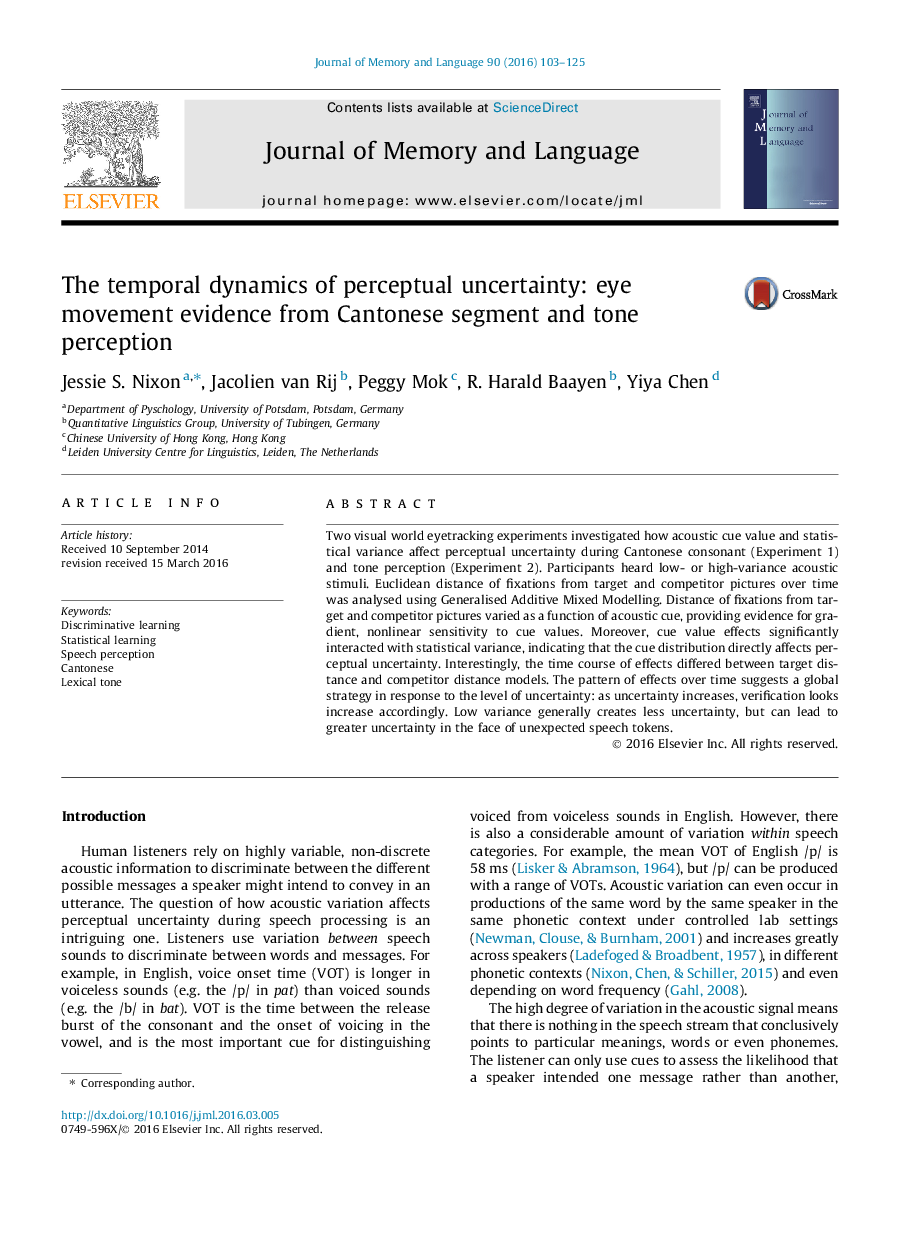| Article ID | Journal | Published Year | Pages | File Type |
|---|---|---|---|---|
| 7296897 | Journal of Memory and Language | 2016 | 23 Pages |
Abstract
Two visual world eyetracking experiments investigated how acoustic cue value and statistical variance affect perceptual uncertainty during Cantonese consonant (Experiment 1) and tone perception (Experiment 2). Participants heard low- or high-variance acoustic stimuli. Euclidean distance of fixations from target and competitor pictures over time was analysed using Generalised Additive Mixed Modelling. Distance of fixations from target and competitor pictures varied as a function of acoustic cue, providing evidence for gradient, nonlinear sensitivity to cue values. Moreover, cue value effects significantly interacted with statistical variance, indicating that the cue distribution directly affects perceptual uncertainty. Interestingly, the time course of effects differed between target distance and competitor distance models. The pattern of effects over time suggests a global strategy in response to the level of uncertainty: as uncertainty increases, verification looks increase accordingly. Low variance generally creates less uncertainty, but can lead to greater uncertainty in the face of unexpected speech tokens.
Related Topics
Life Sciences
Neuroscience
Cognitive Neuroscience
Authors
Jessie S. Nixon, Jacolien van Rij, Peggy Mok, R. Harald Baayen, Yiya Chen,
